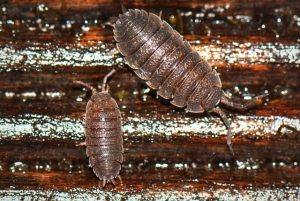 Breeders of isopods for sale in United Kingdom have diverse collections of the little creatures that most people know of as the rolly pollies or woodlice they find in decaying woods. Not many are aware that they are not insects but are terrestrial crustaceans that come in different species with varying characteristics and stunning colours.
Breeders of isopods for sale in United Kingdom have diverse collections of the little creatures that most people know of as the rolly pollies or woodlice they find in decaying woods. Not many are aware that they are not insects but are terrestrial crustaceans that come in different species with varying characteristics and stunning colours.
Collecting various cultures is a gratifying experience for many UK hobbyists as studies state that there are about 10,000 species of isopods thriving in terrestrial and aquatic environments. The most popular examples of isopod species collected as pets by hobbyists include Armadillidium Gestrol, Armadillidium Granulatum, Cubaris, Porcellionides Pruinosus, Porcellio Laevis, Cristarmadillidium and Merulanella.
Significance of the Clean-Up Functions Performed by Isopods
The species commonly found in natural environments are usually sold to animal breeders/keepers who use them for cleaning up soil-based enclosures like cricket feeder tanks. Isopods perform important functions by consuming decaying matter like fallen leaves, dead plants and rotting wood usually occurring in moist and dark places.
Actually, every year and during the fall season, mountainous heaps of rotting plants, leaves, decaying wood sticks and even dead trees could occur if not for the natural and chemical functions performed by the terrestrial crustaceans. Actually, they perform such functions alongside common decomposers like worms, insects, fungi and bacteria.
They all feed on dead organic materials to naturally break down the wastes into soluble matter like minerals, chemical elements and gas. Isopods play the most significant role in these ecosystemic interactions because the litter that they produce reintroduces minerals and chemical elements back to earth, which naturally improves soil fertility.
Studies also indicate that almost half of the known species of isopods are deep-sea dwellers, while some can be found in coastal areas and shallow shelf waters. Yet unlike terrestrial isopods, aquatic isopods living in the deepest parts of the ocean have a tendency to grow in gigantic proportions. It’s a phenomenon that marine scientists explain as the way deep sea creatures adapt to withstand the extreme pressure of deep ocean waters.
All other things considered aquatic isopods also feed on decaying plants and carcasses of dead sea creatures occurring in aquatic places.
Common Examples of Terrestrial Isopod Offered as Nature Cleaners to Animal Keepers
Two of the most common species of terrestrial isopods found in UK forests, gardens and even in the damp sections of UK homes are the Oniscus asellus and the Armadillidium vulgare.
Oniscus Asellus – are the most common woodlouse and also the largest species of terrestrial isopods found in Britain and Western Europe since they can grow up to 16 millimetres long. This isopod species are popularly known as rolly pollies because they are inclined to curl up their flat body into a tight ball to protect themselves against predators.
 Armadillidium Vulgare – This isopod species is commonly called pill bugs because of its semi-flat oval-shaped body. Unlike the brown-coloured Oniscus Asellus, the Armadillidium Vulgare is grey and has three body parts: the head, the thorax and the abdomen that have segments resembling armour plates.
Armadillidium Vulgare – This isopod species is commonly called pill bugs because of its semi-flat oval-shaped body. Unlike the brown-coloured Oniscus Asellus, the Armadillidium Vulgare is grey and has three body parts: the head, the thorax and the abdomen that have segments resembling armour plates.
An interesting fact about Armadillidium Vulgare is that they extend their clean up process by eating their own litter. They do so to make sure that minerals, particularly copper not taken out during the first excretion, are fully expelled out of their digestive system.



